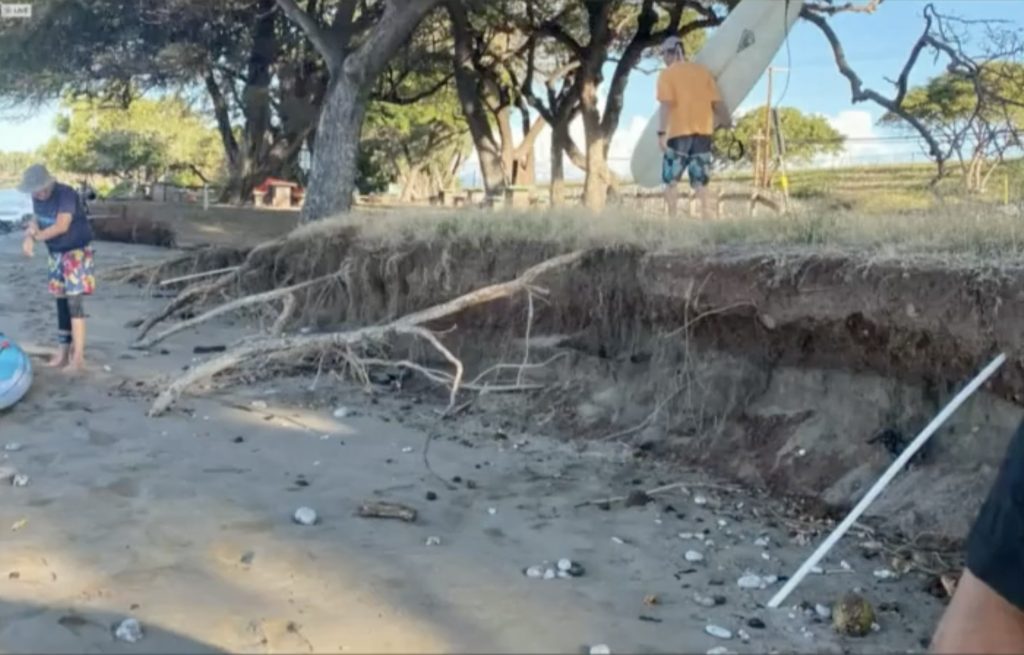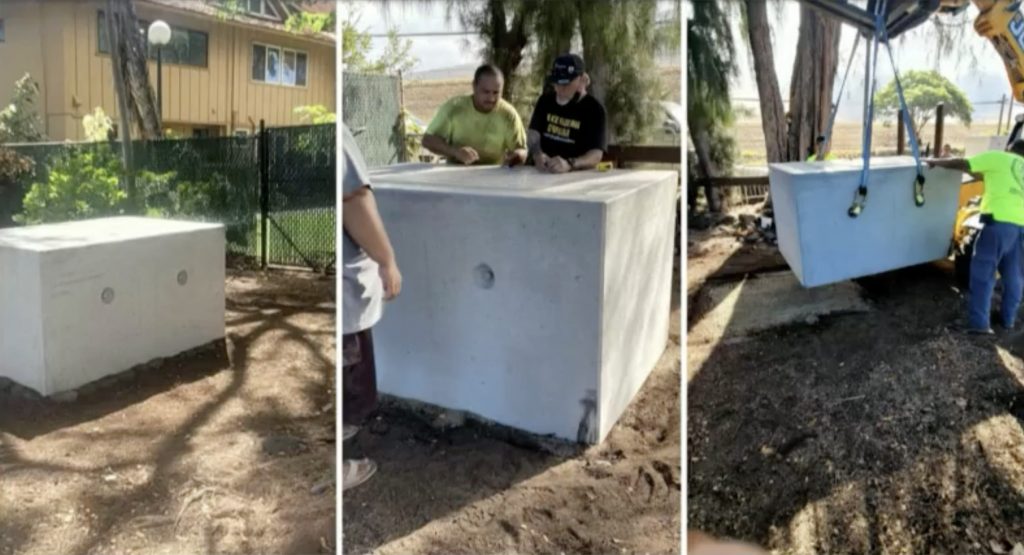Iwi kūpuna found at West Maui surf spot Puamana may find rest soon


What started as five bones turned into more than five boxes of bones found over the last several years at surf spot Puamana Beach Park in West Maui, according to Native Hawaiian cultural practitioner Keeaumoku Kapu.
Kapu, who has been overseeing the iwi kūpuna, or ancestral bones, said he hopes they will get rest again soon.
“They’ve been in my custody under our cultural center for over two years now, and I want them to go home because they’re starting to make noise in my building,” Kapu told council members last week.
The county Parks department purchased large reinterment lock boxes that will hold iwi kūpuna onsite at Puamana Beach Park. After reinterment, officials hope to collaborate with Kapu, other area stakeholders and the community on a long-range plan for the county park, which has been closed since 2021.
Kapu during the council’s Human Concerns and Parks Committee on Thursday gave an update on seaside graves exposed due to worsening erosion. The West Maui resident leads Na Aikāne O Maui cultural center, which is recognized by the State Historic Preservation Division and Maui/Lānaʻi Islands Burial Council as interim repository for curation and final reinterment.
Kapu said he first started working with the county in 2017 when human remains were found at Puamana. In 2021, the county closed Puamana Beach Park due to coastal erosion, exposed iwi kūpuna and safety concerns.
Although the park is shuttered with signs and barriers, some people, including surfers, still congregate there, he said.
Kapu said he hopes the public can be taught about contacting State Historic Preservation Division and Maui Police Department when suspecting iwi kūpuna. Bones should not be photographed or disturbed, he said.
Once tourists found a skull and brought it to their hotel, thinking it was a coconut, he said. Another time, a Puamana condo manager took photos of skulls, which should not be done, and Kapu had the photos erased.
County archeologist Janet Six said coastal erosion is intensifying the exposure of a large pre-contact burial ground that’s been identified on several maps.
“This is not exclusive to Puamana beach park,” she said. “We know they’re coming out under guardrails, a surf spot that is state owned, as well as in front of the Puamana condos.”
Kapu is working with the county archeologist, county Parks, Planning and Corporation Counsel departments, the State Historic Preservation Division and Maui/Lānaʻi Islands Burial Council.
Council members Thursday said they are going to request regular updates on Puamana Beach Park from the Parks department.








